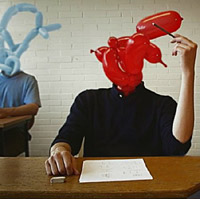
by Trevor Mayes | Dec 18, 2009 | Dialogue |
Preamble In a previous post, I discussed some of the concepts and examples behind the expression, “Show don’t tell.” A picture says a thousand words — imagine how many words motion-pictures say. That’s why it’s a well-regarded rule...

by Trevor Mayes | Dec 17, 2009 | Dialogue, Formatting |
Time for a pop quiz about using numbers in your dialogue. Part 1 – Regular Numbers Is the following usage correct? MARK TWAIN I can live for 2 months on a good compliment. It’s actually incorrect. Numbers should always be spelled out, as follows: MARK...
by Trevor Mayes | Nov 23, 2009 | Dialogue, Formatting, Style |
First, what are they? Parentheticals, or actor/character directions, or “wrylies,” are those little descriptions that sometimes appear after a character’s name, in dialogue blocks, to spell out tone, intent or action. In the poorly written example...

by Trevor Mayes | Nov 6, 2009 | Characters, Dialogue, Scenes, Style |
There’s an old adage in screenwriting — show, don’t tell. If there’s a key character trait, event, or setting that the audience needs to know about, provide that information visually. Why? Humans are visual — we learn things more quickly...

by Trevor Mayes | Oct 30, 2009 | Dialogue, Scenes, Style |
Like exercising, screenwriting takes discipline. Before you sell your script, there’s no one there to police your scenes but you. As such, one of the most common mistakes writers make is they allow their scenes to binge on the Vegas-sized buffets of their...





